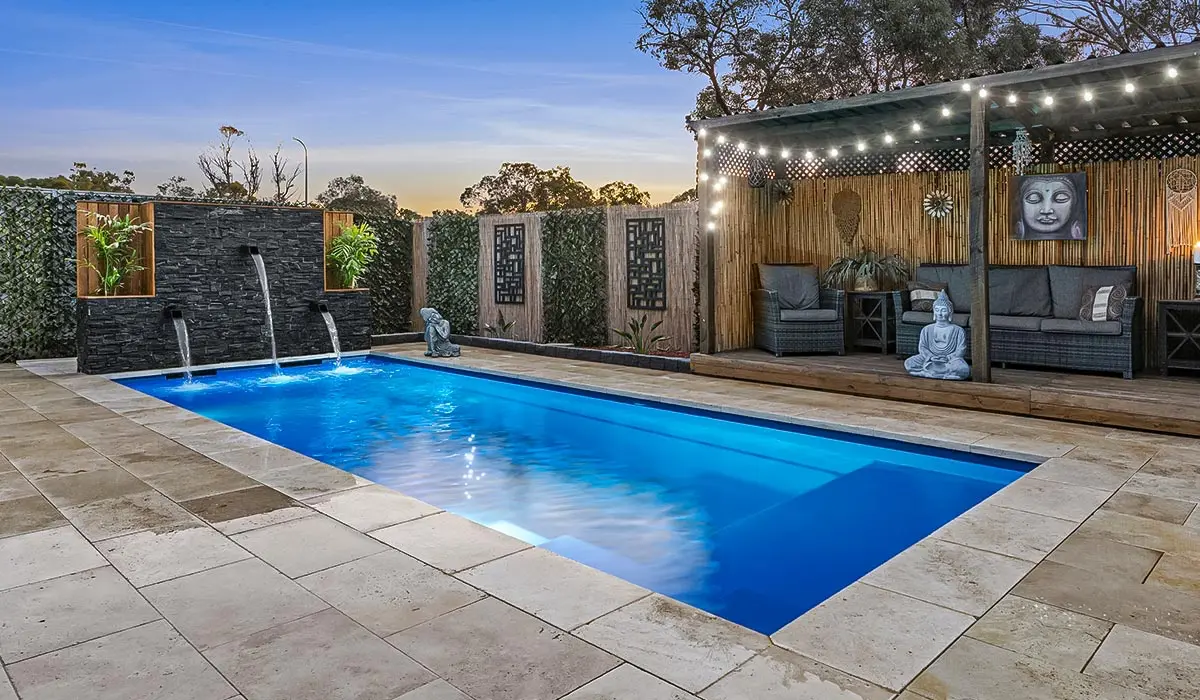
The 4 Most Popular Types of Pool Coping
Introduction
While many homeowners focus on pool shape, color, and decking, one essential design element often gets overlooked: pool coping. Coping is more than just a finishing touch—it plays a crucial role in both the functionality and aesthetics of your fiberglass pool. It prevents water from seeping behind the pool shell, enhances safety, and adds a polished look to your pool’s edge. But with so many options available, how do you choose the right one?
In this guide, we’ll explore the four most popular types of pool coping, their benefits, and key considerations. Whether you’re looking for a modern pool coping solution or timeless elegance, you’ll find the perfect option to complement your backyard retreat.
What Is Pool Coping and Why Does It Matter?
Definition
Pool coping is the material that caps the edge of a pool, creating a smooth transition between the pool and the surrounding deck. It serves both functional and aesthetic purposes, making it an essential component of any well-designed pool.
Functions of Pool Coping
- Prevents Water Damage: Directs water away from the pool shell, protecting its structural integrity.
- Enhances Safety: Provides a non-slip surface, reducing the risk of slips and falls.
- Adds a Finished Look: Creates a polished, visually appealing edge around the pool.
Key Considerations When Choosing Pool Coping
- Budget: Costs vary significantly based on material and installation complexity.
- Durability: Some materials withstand weather and wear better than others.
- Aesthetic Appeal: The right coping enhances your pool’s overall design.
- Maintenance Requirements: Certain materials need regular sealing or upkeep.
1. Cantilevered Concrete Coping
What Is Cantilevered Concrete Coping?
Cantilevered concrete coping involves pouring concrete to extend over the pool’s edge, creating a seamless and modern pool coping finish. It often features a rounded, bull-nosed edge for a smooth appearance.
Benefits
- Cost-Effective: Typically costs between $6 to $10 per linear foot, making it one of the most budget-friendly options.
- Modern and Seamless Look: Ideal for homeowners seeking a sleek and contemporary design.
- Durable and Low Maintenance: With proper sealing, concrete coping can withstand exposure to water and weather conditions.
Considerations
- Requires Skilled Installation: Achieving a flawless finish demands expertise.
- Potential for Cracking: Concrete can develop cracks over time if not installed correctly.
2. Paver Coping
What Is Paver Coping?
Paver coping consists of pre-cast concrete pavers with rounded edges that are either bonded directly to the pool shell or set on a mortar bed.
Benefits
- Uniform and Controlled Appearance: Provides a clean, structured look, perfect for modern pool coping designs.
- Easy Repairs: Individual pavers can be replaced if damaged, reducing long-term maintenance costs.
- Versatile Design Options: Available in various colors and textures to match different outdoor aesthetics.
Considerations
- Higher Cost: Typically ranges between $40 and $50 per linear foot, making it an upgraded option.
- Requires Proper Installation: Ensuring a secure bond is essential to prevent shifting or loosening over time.
3. Travertine Coping
What Is Travertine Coping?
Travertine is a natural stone material that creates a luxurious, marble-like border around the pool.
Benefits
- Timeless Elegance: Offers a high-end, sophisticated look that complements various pool designs.
- Slip-Resistant Surface: Enhances safety, especially for families with children.
- Stays Cool to the Touch: Unlike other materials, travertine remains comfortable underfoot, even in hot weather.
Considerations
- Premium Price Tag: Costs approximately $45 to $55 per linear foot.
- Requires Sealing: Regular sealing helps maintain its appearance and durability.
4. Bluestone Coping
What Is Bluestone Coping?
Bluestone is a high-quality natural stone that offers a distinctive, sophisticated look for pool edges.
Benefits
- Non-Slip Surface: Provides excellent traction, reducing the risk of slips and falls.
- Variety of Colors and Shades: Available in blue-gray, tan, and earth tones, allowing for customization.
- Durability: Resistant to wear and weather conditions, ensuring longevity.
Considerations
- Similar Cost to Travertine: Expect to pay $45 to $55 per linear foot.
- May Require Sealing: Helps prevent discoloration and maintains its natural beauty.
Choosing the Right Pool Coping for Your Backyard
Factors to Consider
- Budget: Determine how much you’re willing to invest in pool coping.
- Aesthetic Preferences: Do you prefer a modern pool coping style or a more traditional look?
- Maintenance Requirements: Some materials require more upkeep than others.
- Climate Considerations: If you live in a hot area, heat-resistant materials like travertine are a great choice.
Consulting a Professional
To ensure the best results, working with a pool coping expert is highly recommended. They can help you select the right material that complements your pool design while staying within budget.
Final Thoughts
Pool coping is an essential design element that enhances both the functionality and beauty of your fiberglass pool. Whether you prefer the affordability of cantilevered concrete, the structured elegance of paver coping, the luxurious feel of travertine, or the timeless appeal of bluestone, there’s a perfect option for every homeowner.
By considering factors like budget, aesthetics, and maintenance, you can choose a coping style that transforms your pool into a stunning backyard retreat. Ready to elevate your pool design? Get in touch with the Leisure Pools OK team today!
